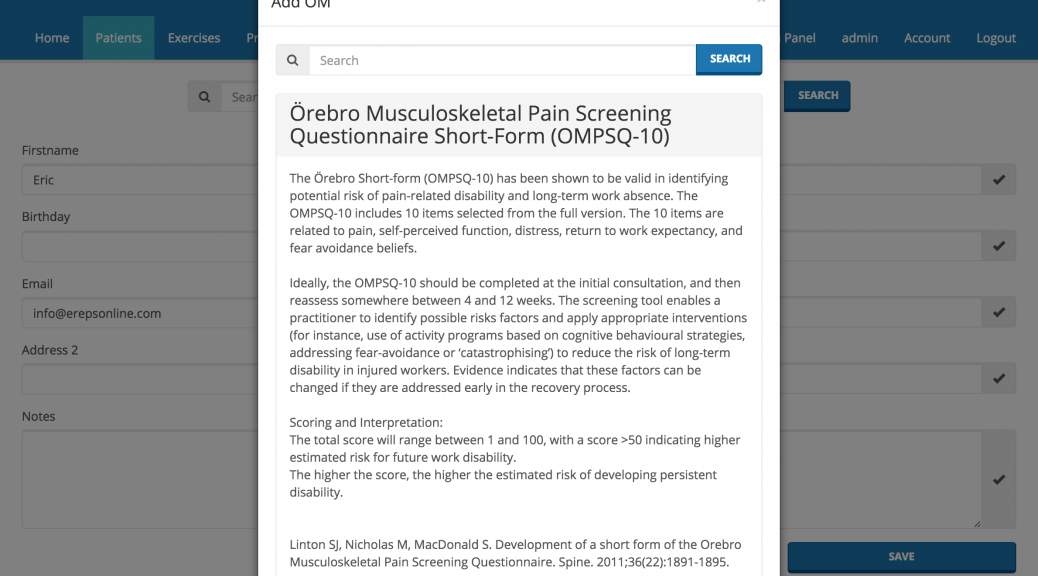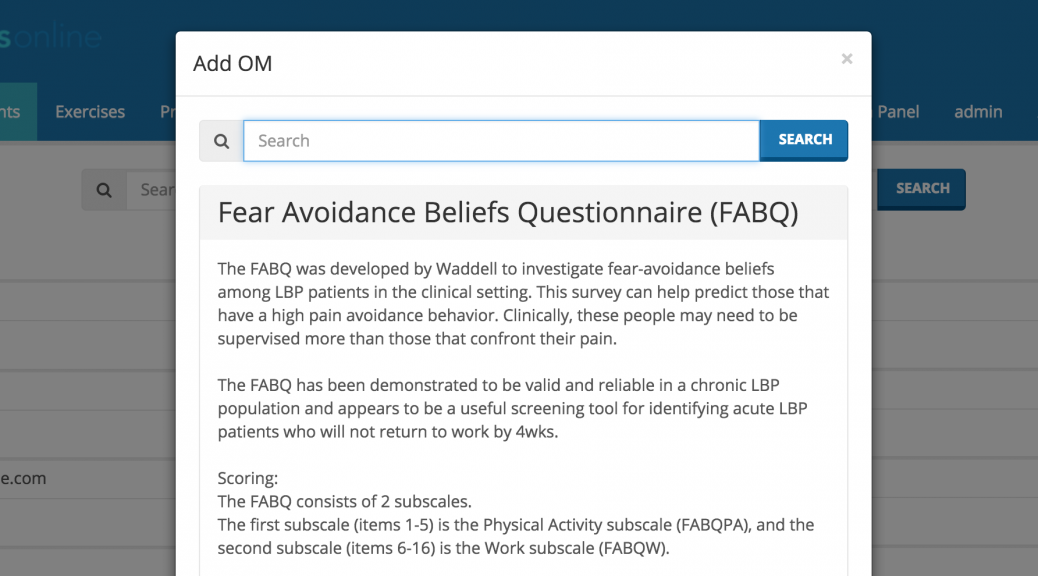Evidence suggests that clinicians are limited in their ability to identify psychosocial factors in patients presenting with musculoskeletal (MSK) pain.(1,2) As such, it is important to use screening tools to improve clinical recognition and the contribution of psychosocial factors in MSK pain disorders.(3-5)
The Örebro Musculoskeletal Pain Screening Questionnaire (ÖMPSQ) has had several studies demonstrate its clinical utility in the identification of psychosocial factors.(6-8) However, calls were made to reduce the 21-item ÖMPSQ to a shorter form. A shorter version of the ÖMPSQ would improve practicality and reduce the burden on patients, clinicians and researchers.
The ÖMPSQ short version (ÖMPSQ-10) has recently been shown to be valid in identifying potential risk of pain-related disability and long-term work absence.(9) The ÖMPSQ-10 includes 10 items selected from the full version.(9) These items are scored 0-10, where 0 refers to absence of impairment and 10 to severe impairment.
The total score will range between 1 and 100, with a score >50 correlating with greater long-term sick leave and poorer outcomes (high risk patient).(9)
In conclusion, the ÖMSPQ-10 is appropriate for clinical and research purposes, since it is nearly as accurate as the longer version.(9) It can also be used to monitor patient progress (e.g. administer the ÖMSPQ-10 monthly or every 3-months to monitor changes over time).
Easily administer, score and interpret outcome measures – including the ÖMSPQ-10- through Erepsonline. For more information on selecting and viewing outcome measures, see the Erepsonline Video Tutorials, or check out the Quick Start Quide
References:
- Bishop A, Foster NE. Do physical therapists in the United kingdom recognize psychosocial factors in patients with acute low back pain? Spine 2005;30:1316-22.[PMID: 15928559]
- Hill JC, Vohora K, Dunn KM, et al. Comparing the STarT back screening tool’s subgroup allocation of individual patients with that of independent clinical experts. Clin J Pain2010;26:783-7. [PMID: 20842014]
- Australian Acute Musculoskeletal Pain Guidelines Group. Evidence-based mamagement of acute musculoskeletal pain. Brisbane: Australian Government: National Health and Medical Research Council, 2003. [pdf]
- Chou R, Qaseem A, Snow V, et al. Diagnosis and treatment of low back pain: a joint clinical practice guideline from the American College of Physicians and the American Pain Society. Annals of internal medicine 2007;147:478-91. [PMID: 17909209]
- van Tulder M, Becker A, Bekkering T, et al. Chapter 3. European guidelines for the management of acute nonspecific low back pain in primary care. Eur Spine J 2006;15 Suppl 2:S169-91. [PMID: 16550447]
- Gabel CP, Burkett B, Neller A, Yelland M. Can long term impairment in General Practitioner Whiplash patients be predicted using screening and Patient Report Outcomes? Int J Rehabil Res 2008; 31(1): 79-80.
- Gabel CP, Melloh M, Yelland M, Burkett B, Roiko A. Predictive Ability of a Modified Örebro Musculoskeletal Pain Questionnaire in an Acute Low Back Pain Working Population. Eur Spine J 2011; 20(3): 449-57.
- Gabel CP, Burkett B, Yelland M, Melloh M, Osborne J. The Örebro Musculoskeletal Screening Questionnaire: validation of a modified primary care musculoskeletal screening tool in an acute work injured population. Man Ther 2012;17(6):554-65
- Linton, S. J., Nicholas, M., & MacDonald, S. (2011). Development of a short form of the Orebro Musculoskeletal Pain Screening Questionnaire. Spine, 36(22), 1891-1895.[PMID: 21192286]

